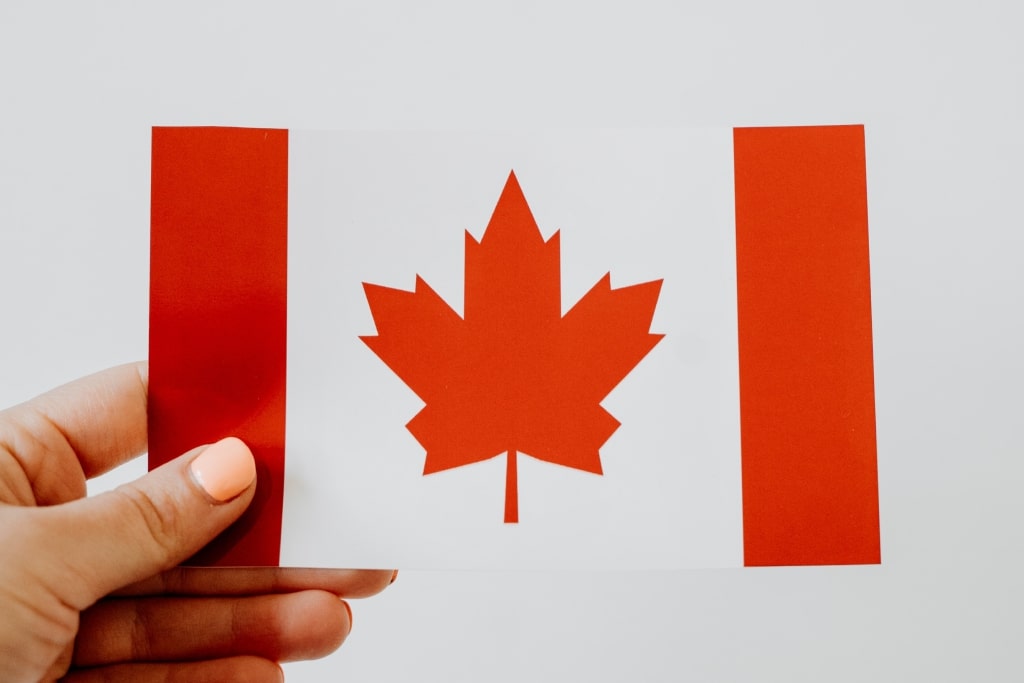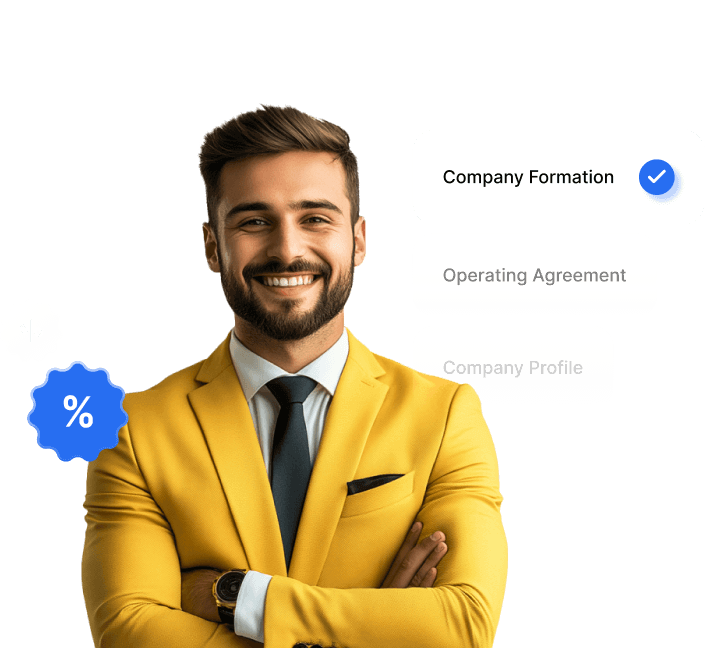Looking to set up an LLC in Canada? Many companies have figured out how to start and operate a US-based LLC, and we'll show you exactly how to do it.

A limited liability company (LLC) is a hybrid-style business that features characteristics of a corporation and those of a sole proprietorship or partnership.
Learning more about the LLC incorporation process and how to get one started in Canada can help you tap into the US market and do business in USD — while never having to leave Canada!
What is an LLC?
LLCs are a common business structure used in the United States. The purpose of this business structure is to protect the owners from personal responsibility for their liabilities or debts.
An LLC is like a corporation — however, the flow-through taxation it provides its members is commonly seen in partnerships.
In the U.S., LLCs are formal business arrangements requiring the use of articles of organization filed with the state. It’s simple to set up an LLC compared to a corporation and offers more protection and flexibility for the investors. Some LLCs choose not to pay federal taxes directly — the business’s profits and losses are reported on the owner’s personal tax returns. An LLC can choose a different classification, too, like a corporation.
Can you actually open an LLC in Canada?
The LLC arrangement for business ownership is not offered in Canada. As in, a Canadian business can not be located in Canada (on paper) and run as an LLC. This is why many Canadian companies operate as LLPs (Limited Liability Partnership) instead of LLCs.
However, it is possible for Canadians to own a US-based LLC and operate it from Canada.
If you live in Canada, you can form an LLC in the U.S. from anywhere. As a non US resident, there’s actually no need for you to visit the U.S. to open a business entity there. What’s somewhat surprising is that through the years, creating an LLC in the United States has become a popular option for Canada-based founders because of the currency conversion benefits and tax benefits.
Keep reading to learn more about how to open an LLC in the U.S. while you are living in Canada.
6 steps to form a US LLC while living in Canada
Here you can learn the six steps you must follow to form a U.S. LLC while living in Canada.
1. Create a name for your LLC
Selecting a business name should not be that hard. This is when you can have some fun and get creative.
However, some guidelines you need to follow are established by the Secretary of State. These include:
- Make sure the phrase “limited liability company,” “LLC,” or “L.L.C.” is included in the name.
- Avoid using any words that sound like a government agency (i.e., State Department, FBI, Treasury, etc.)
- Never use restricted words like Attorney, University, or Bank without completing the additional paperwork and meeting set criteria.
- If you use Canadian words or terms that are not English, be sure to include the translation when you register the business name.
Once you have decided on the name, you need to follow these steps:
- Look for business names on the Secretary of State’s website.
- Check to see if the domain name is available for a business website.
- Use the U.S. Trademark Electronic Search System to check the name (this is a necessary step even if you don’t have plans to trademark it).
- Look online for businesses with similar names.
2. Form your company with an RA (Registered Agent)
The Secretary of State requires that all LLCs have a registered agent who is in the state where it is formed.
A registered agent is a person or authorized entity that holds a tangible address in the state where it is formed and is willing to receive official notices on behalf of your LLC. Since you live in Canada, the U.S. requires a local representative who is physically present in the States. This is the person or entity who will receive notices of legal summons, tax notices, lawsuits, and more on behalf of the LLC.
If you have family members or friends who live in the state where you establish your LLC, you can make them your registered agent; however, for them to do this, they must be available five days a week and allow their contact information to be public.
For many, a better and preferred option is to use doola as a professional registered agent. This will eliminate the hassle of having a family member or friend handle this for you.
3. Get a virtual mailing US address
If you are a resident of Canada but forming a U.S. LLC, you will need a virtual mailing address in the United States. While your registered agent will handle official correspondence and notices, you need a virtual address for regular mail. You can find several online services that provide these addresses, so it’s best to compare options and find the one that is right for you.
doola also provides a virtual mailing address for all LLCs.
4. Get your EIN
The next step is to request an EIN or Employer Identification Number. These are also called Federal Tax Identification Numbers. Your EIN is how the IRS identifies you for business tax purposes.
You must have an EIN in the following situations:
- If you have hired an employee or plan to hire one.
- To open a business checking account and meet other banking requirements.
- To qualify for loans and building credit.
- Create accounts with FBA, PayPal U.S., Stripe U.S., and similar platforms.
You can either have doola handle this entire process for you, or you can apply for an EIN using these steps:
- Have your LLC approved by the state. If you don’t do this, then you may get an EIN for a different or the wrong business name. There’s a lot of work involved with canceling an EIN and having to reapply.
- Fill out form SS-4 and send it via fax or mail. When you are a resident of Canada, you may not have a U.S. Social Security Number. The best way to get your EIN with no SSN is by filling out the SS-4, the Application for Employer Identification Number. This isn’t a form you can file online.
- Include your U.S. address on lines 4a and 4b of the form. You don’t have to have a U.S. mailing address; however, some banks can use the address you mention on these lines as proof of address. Also, mentioning a U.S. address reduces the waiting period after you submit your application.
- Attach the LLC’s Certificate of Formation when approved. While this isn’t required, it is recommended.
- Your EIN confirmation letter is sent to the address you include on your form. Use a mail address forwarder in the U.S. who can send you the letter at your Canada location.
5. Apply for a US business bank account
It’s necessary to have a U.S. bank account for your business for your LLC. This is necessary if you are operating in the U.S. and living in Canada.
doola partners with US-based banks to make this possible for any international business owner. You can also use doola banking to begin receiving and sending payments in USD. The benefit of using something like doola banking is that your taxes and bookkeeping will be taken care of (using the Total Compliance package offering from doola).
6. Set up your payment processor(s)
Choosing the right payment processor matters. This is going to impact your business in many ways, so you need to put some thought into who you use.
Once you have your EIN and virtual address, you’ll be able to create a Stripe or PayPal account and easily start processing payments.
7. Keep up with annual tax filings
You will have to keep up with two types of income taxes. This includes federal income taxes and state income taxes.
If you are a non-resident and living in Canada, there is no state income tax in certain states, including Delaware, Alaska, Washington, Florida, Texas, Nevada, Tennessee, and South Dakota. Choosing one of these states for your LLC will provide some tax relief.
Your federal income tax amount is determined based on a few factors. It’s somewhat complicated. You can find tax estimators online that will help you determine how much tax you will or do owe.
Incomes are two types of Effectively connected income (ECI) and Fixed, Determinable, Annual, and Periodic income (FDAP). The EIC is usually used to describe your business’s income, and the FDAP refers to passive income, such as royalties, interest, dividends, and rent.
When determining how much federal income tax you owe, the IRS looks at ECI and FDAP differently. Usually, ECI is taxed at unique tiers that range from 10% up to 37%. The FDAP income is usually taxed at 30%. While this is true, it’s also worth remembering that the tax rates will vary based on the tax treaty in place between the U.S. and Canada. Based on the treaty, FDAP income from royalties and interest are exempt. However, dividends are taxed at a rate of 15%.
This all may seem overwhelming, so doola offers additional tax services that will take care of all of your IRS tax filings. So with doola, you really are getting a one-stop-shop for registering your LLC and making sure you stay legal year after year.
Conclusion
If you have decided to form an LLC as a Canadian resident in the U.S., the steps here will help you. Making sure that you handle the process properly and legally is a must to ensure that you don’t have any issues and can begin operating your business.




